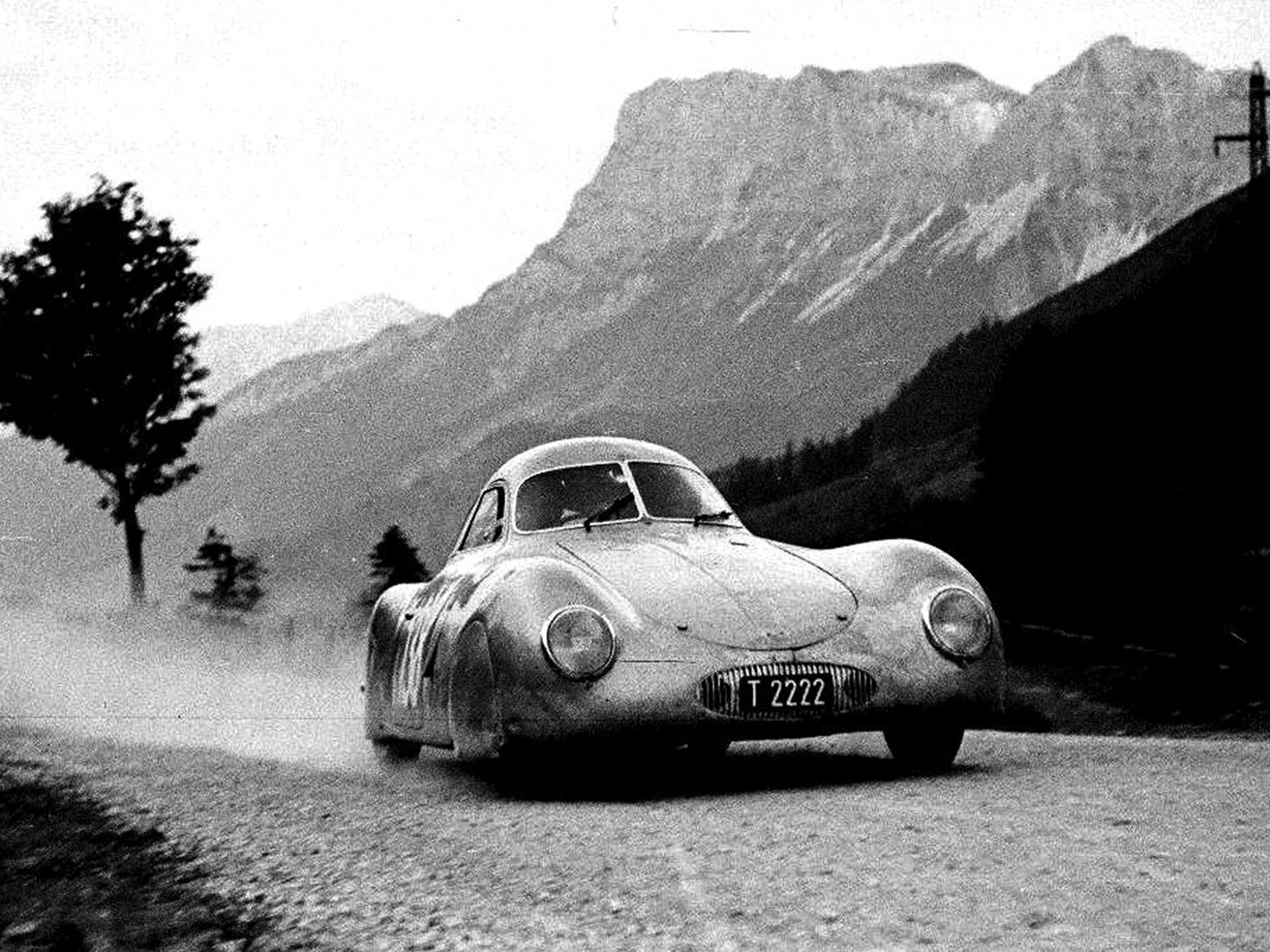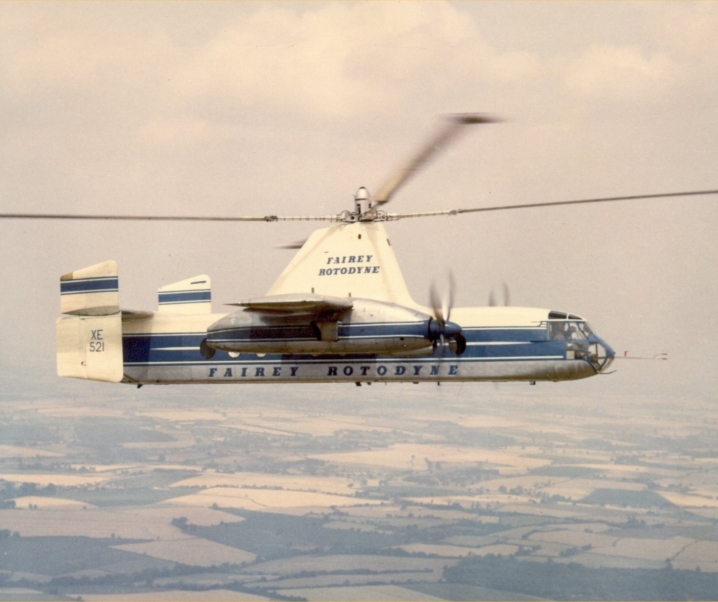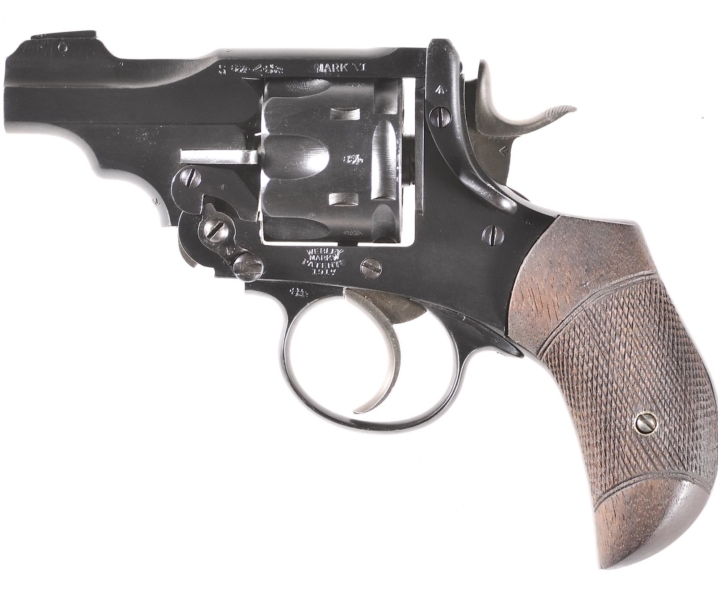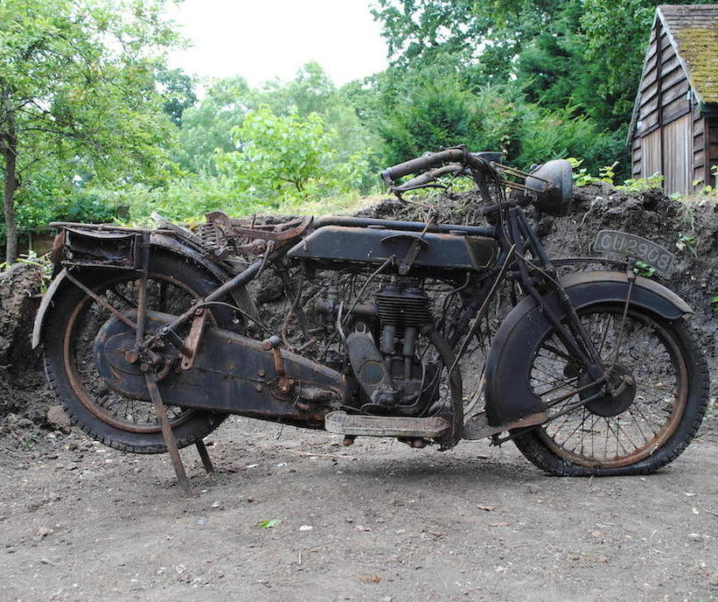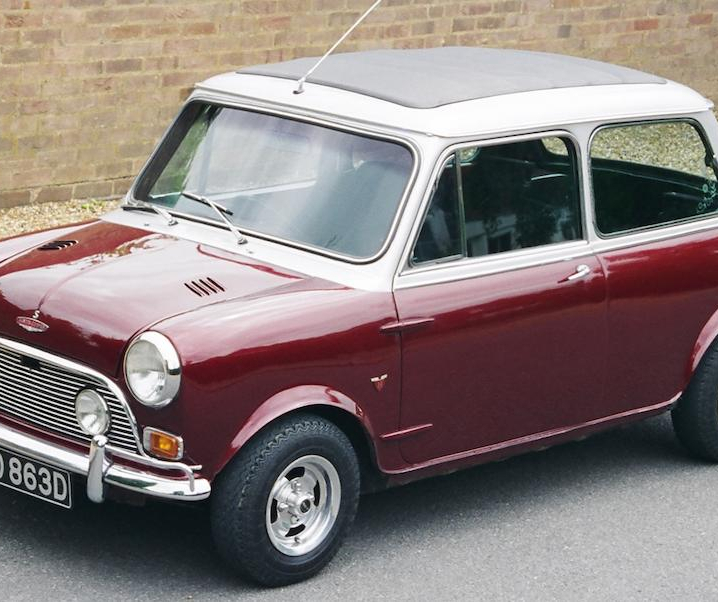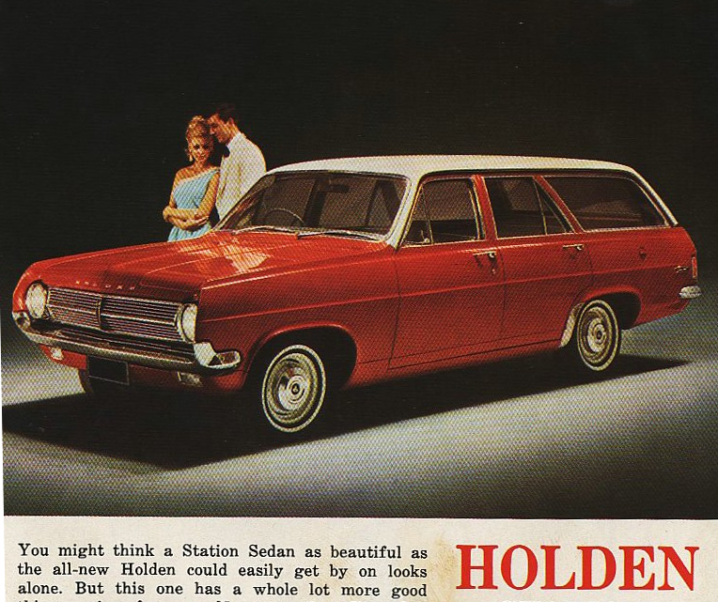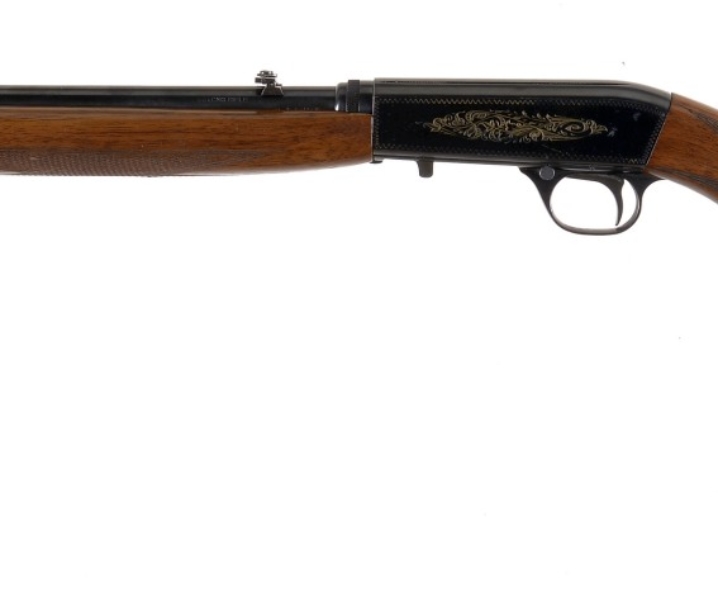From the Silver Arrows to the KdF Wagen to the Porsche Type 64
Dr. Ferdinand Porsche once said “I couldn’t find the sports car of my dreams, so I built it myself.” Dr. Porsche was involved in the design and creation of a number of sports cars ranging from the Mercedes SSK of the 1920’s to the mid-engine Auto Union “Silver Arrows” of the 1930’s: but perhaps the car that epitomized Dr. Porsche’s idea of “ideal” was his development of the humble Type 1 Volkswagen from a “people’s car” providing utilitarian basic transport into the Type 64 racing car, purpose created for the Berlin to Rome road race scheduled to be run in 1938.
Dr. Porsche was a German with Czechoslovakian citizenship and in 1931, having been made redundant because of the Great Depression, he moved to Stuttgart, Germany where he established an automotive design consultancy. There was much discontent in Germany at that time: the reparations she had to pay as a result of the First World War caused much economic hardship and the coming of the Great Depression only served to make the lives of ordinary Germans all the worse. People wanted economic prosperity, and they wanted the dignity of the German nation restored. So when the National Socialist German Worker’s Party (i.e. Nazi Party”) promised these things many in Germany voted for them in the 1932 election with the result that the Nazi Party won 230 of the 608 seats in the German Reichstag (i.e. parliament). The result of this was the Nazi Party forming the national government and the following year people voted to give the Nazi Party and its leader, Adolf Hitler, absolute power.
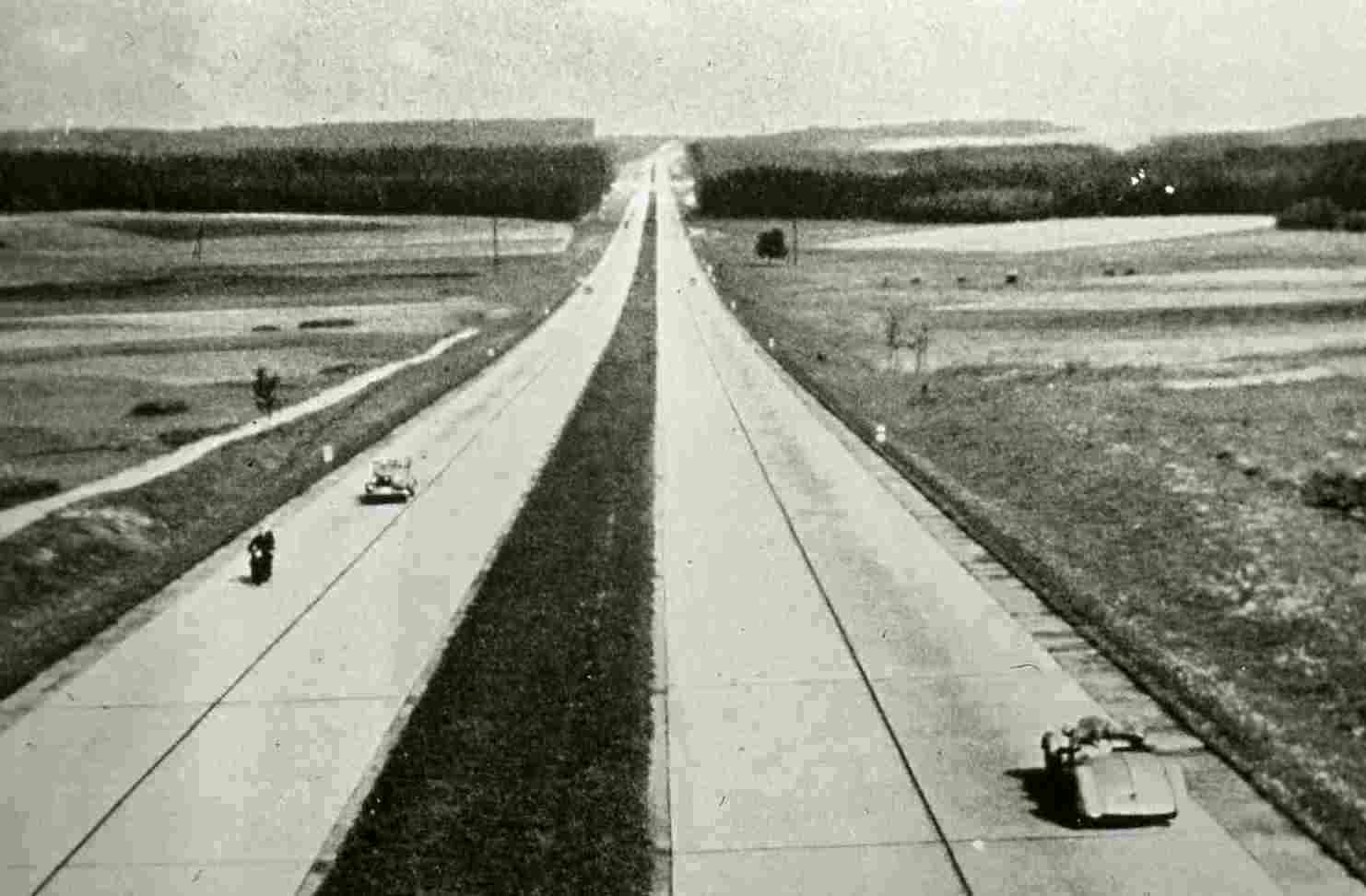
The Nazis lost no time in setting about delivering on promises they had made to the German people: they withdrew Germany from the League of Nations, effectively tore up the Treaty of Versailles, and proceeded to re-arm at a rapid pace. The German people saw things promised coming rapidly to fruition, there were jobs being created and many people’s lives dramatically improved.
During this time Ferdinand Porsche found that he was not getting income from design consultancy work so he took a gamble and set up another company: the “HFB” High Performance Car Ltd. (German: Hochleistungsfahrzeugbau GmbH) in 1932. One of Porsche’s passions was motor racing and he could see that there just might be someone interested in an unbeatable racing car in the new Germany that was determined to prove itself to be the equal of, if not better than, the other nations of the world.
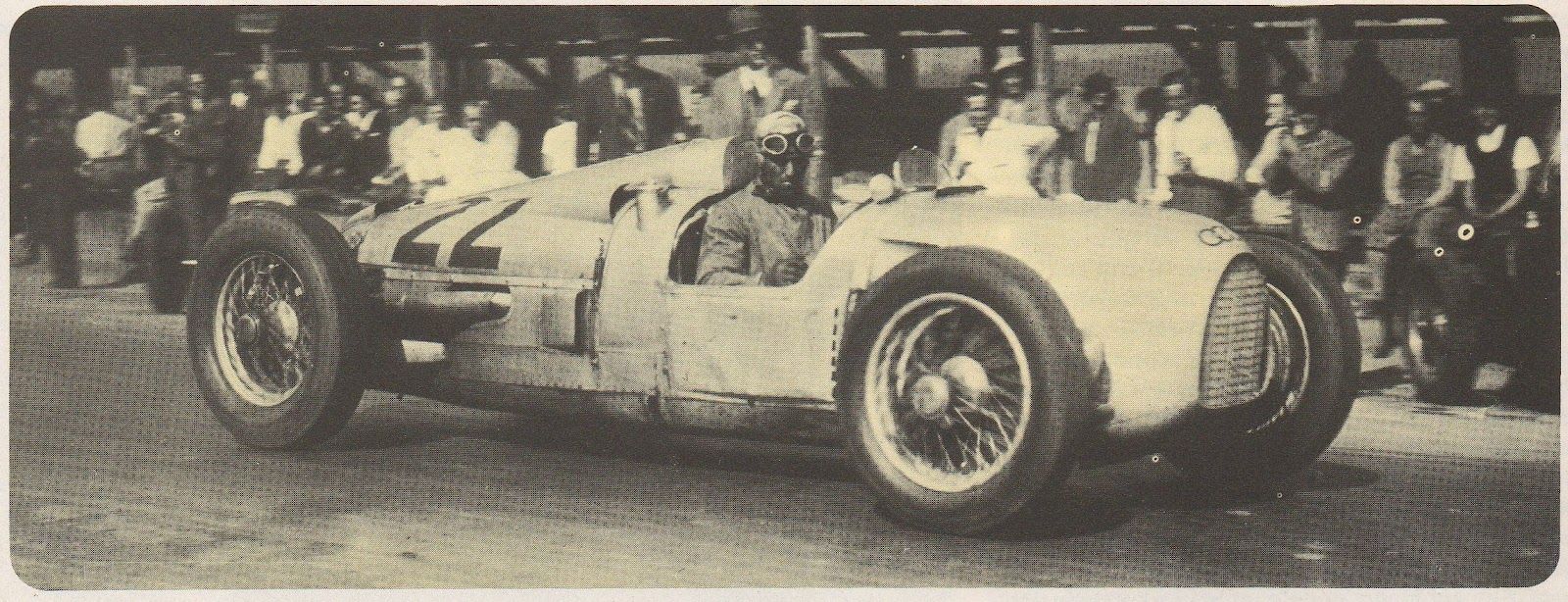
Dr. Porsche took a radical design approach to the creation of the new racing car. It was made for competition in the Association Internationale des Automobile Clubs Reconnus (AIACR) which translates into English as the International Association of Recognized Automobile Clubs. The main rule that racing cars had to meet was that they had to weigh no more than 750kg without fuel, oil, water or tires. Working with associates Karl Rabe and and Josef Kales the new “P-Wagen” (i.e. Porsche Wagen) used a mid engine layout like the Benz Tropfenwagen of 1923. Karl Rabe was primarily responsible for the chassis while Josef Kales created an impressive V16 engine that would propel this new silver arrow so fast it was guaranteed to turn the driver’s hair the same color as the silver bodywork.
The new P-Wagen was shown to management of the newly formed Auto Union and they were sufficiently interested in it that they would subsequently purchase the Hochleistungsfahrzeugbau GmbH and use the P-Wagen as their works racing cars.
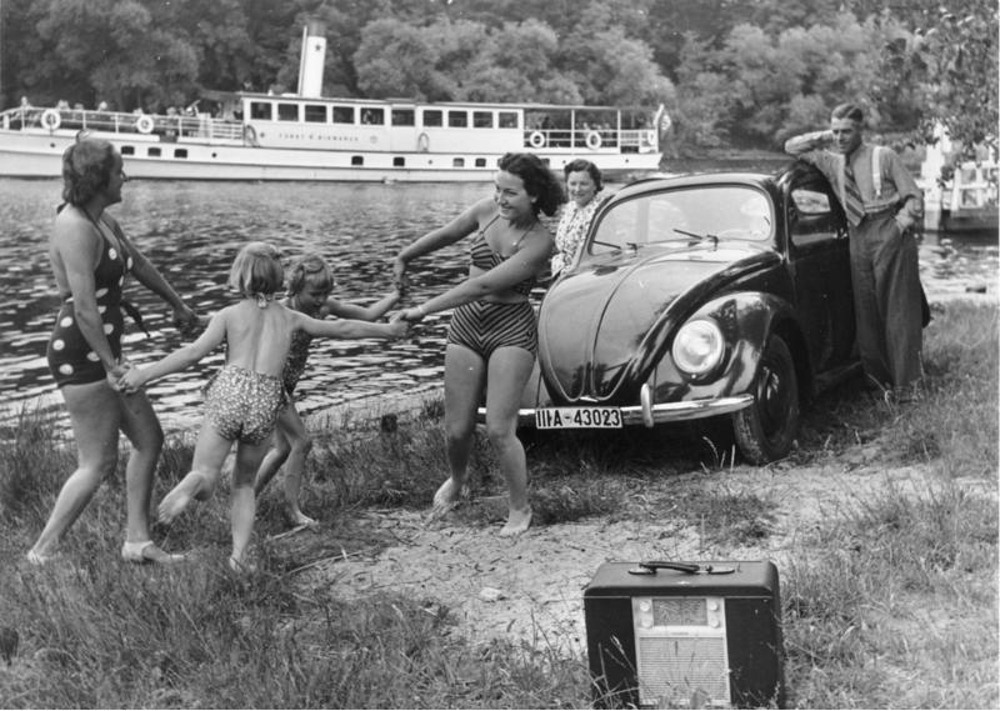
Among the promises that Hitler made to the German people was that in his new socialist Germany every worker would be able to afford a car and have the freedom and convenience that a car would provide them. There would also be new intercity highways called Autobahns to make travel easy and fast. It was at the 1933 Berlin Motor Show that Adolf Hitler formally announced his two projects, projects that would propel Dr. Porsche into a close working relationship with Hitler. The first of these projects was for a “People’s Car” to be named the “Kraft durch Freude Wagen” (translated “Strength through Joy”) or KdF Wagen: and the second was for a state sponsored motor racing program with a promise of a half million Reichsmarks to Mercedes-Benz.
In his discussions with Hitler Ferdinand Porsche persuaded the Fuehrer that the state sponsorship for motor racing should be split between Mercedes and Auto Union to best ensure success. This led to much chagrin on the part of Mercedes-Benz but Auto Union, racing Porsche’s P-Wagen, were delighted.
Hitler commissioned Dr. Porsche to design and build the car for his people, the “Volksauto”, which would later be called the KdF Wagen, and then the Volkswagen.
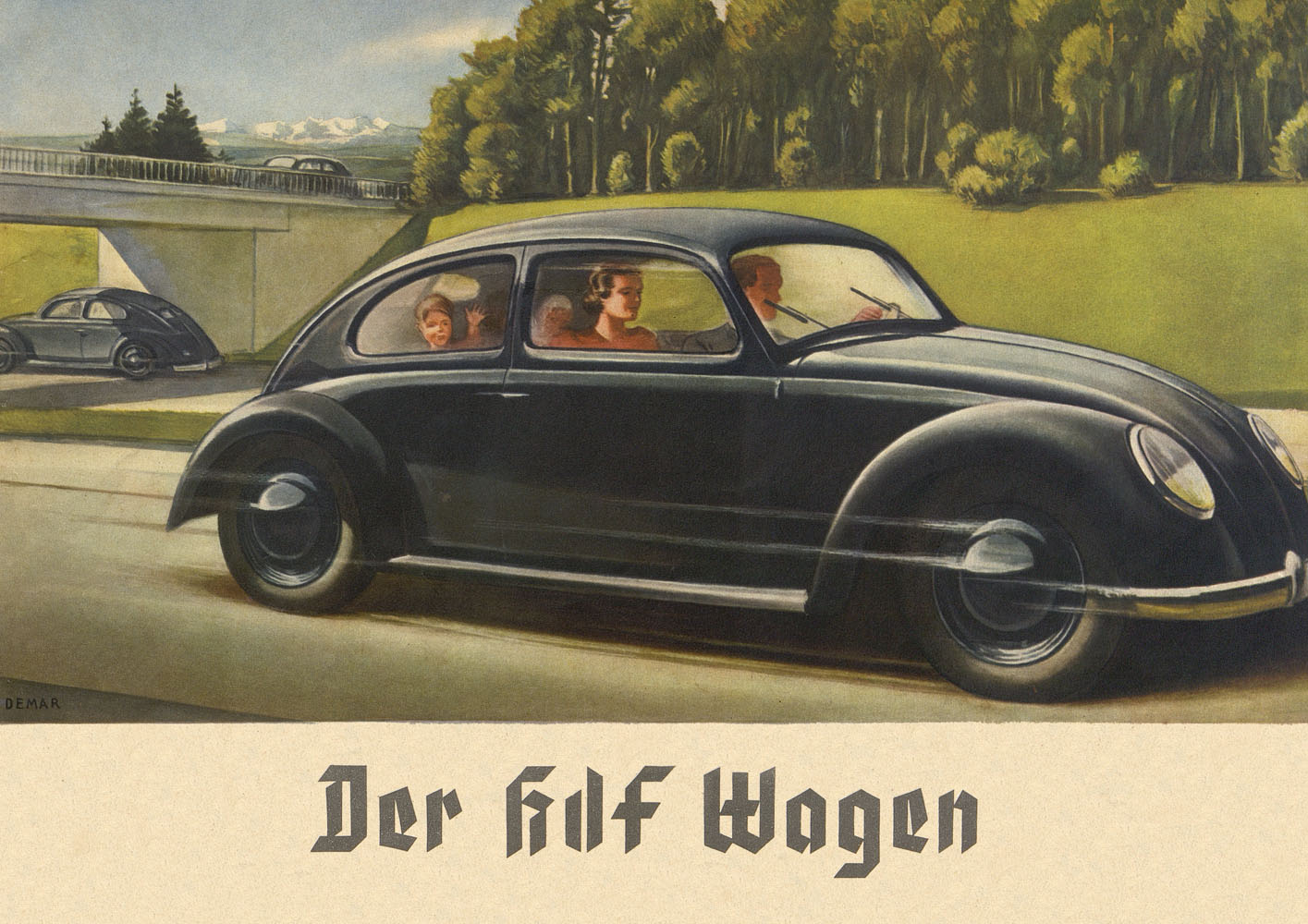
In creating the Volksauto Ferdinand Porsche incorporated ideas and technology from his racing car designs, and other work he had done on small affordable cars, such as his small car design for Zundapp. His design work was done in collaboration with fellow Austrian Hans Ledwinka who was then working in Czechoslovakia for Tatra. The resulting car, the Volkswagen Type 1, was of a design that both Porsche and Ledwinka favored. The engine was a horizontally opposed “boxer” four cylinder mounted in the rear with a transaxle and independent swing axle rear suspension. the front suspension was independent and the springing was by torsion bars as favored by Porsche and featured in the P-Wagen. The humble “People’s Car” was designed not only to provide basic “Gets me from A to B” transportation, but it was built with speed and durability in mind. The Type 1 Volkswagen was made to be reliable in all climates, able to negotiate all roads, and to do 100km/hr. It is clear that the design was created with the idea that it could be re-created as a sports car or racing car, as well as being able to be redesigned as a military vehicle.
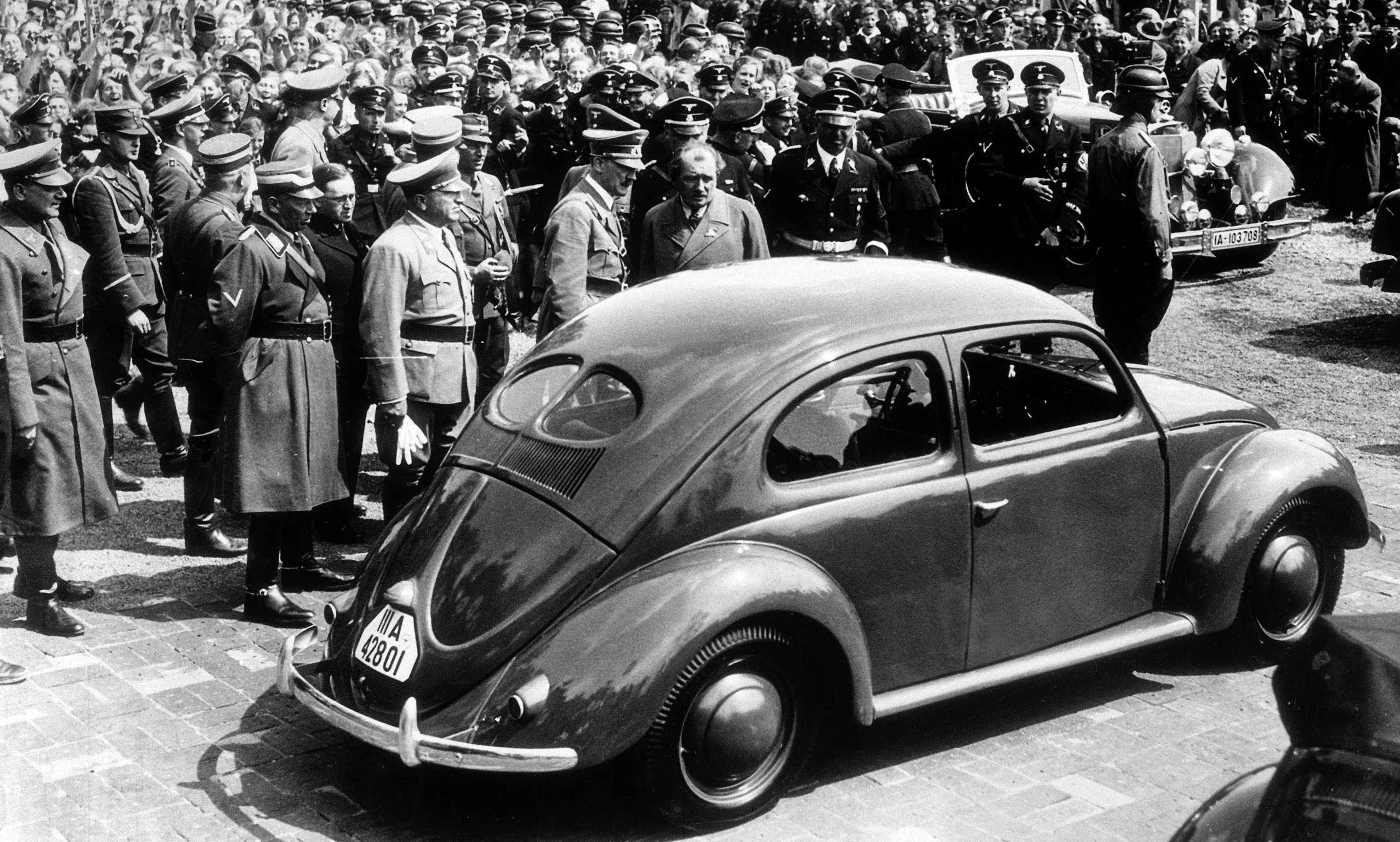
A Motor Race that Wasn’t: the Berlin to Rome and the Type 64
With the design for the Volkswagen complete in 1938 and production being set up at the newly established factory and model village Stadt des KdF-Wagens in Saxony, near the town of Fallersleben, Dr. Porsche and his son Ferry busied themselves with racing car projects that they hoped would be a part of Hitler’s state sponsored motor racing program. During 1938 design work was done on both rear-engine and mid-engine versions of a car designated the Porsche 114. These would not be built, but Hitler decided that a motor race from Berlin to Rome would be a wonderful propaganda exercise: Berlin was the center for the German Nazi Government, and Rome the center for the Italian Fascist government of Benito Mussolini, Germany’s main ally. The race was to be an opportunity to showcase the KdF Wagen and to get people to believe that National Socialism was a wonderful thing.
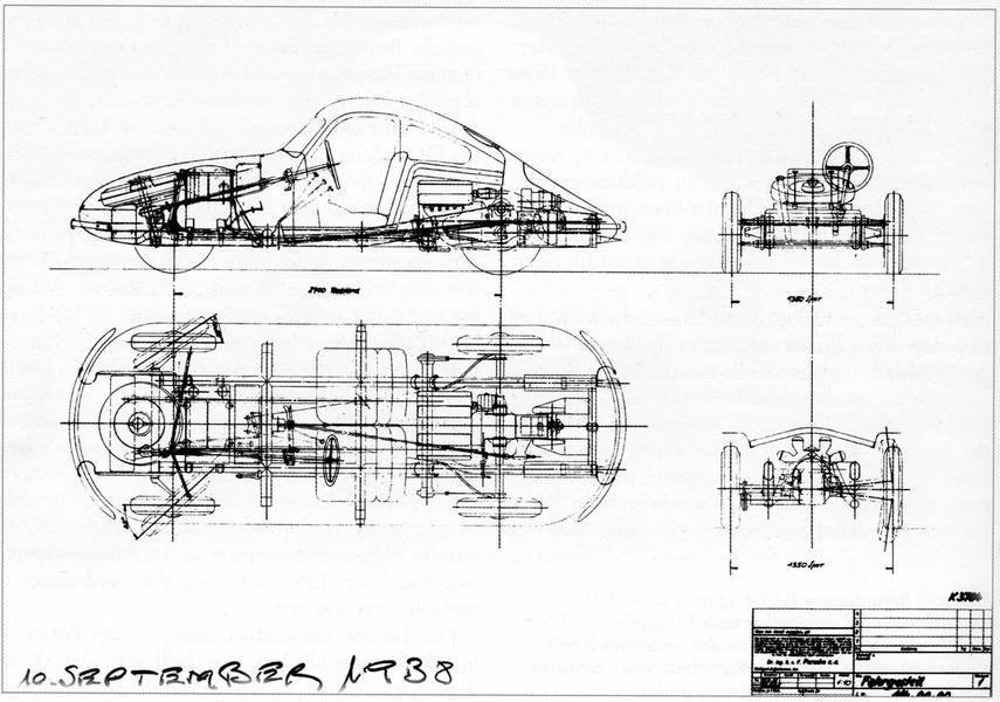
The Rome to Berlin race was originally scheduled for September of 1938 and was to be organized by the paramilitary NSKK (Nationalsozialistisches Kraftfahrkorps, which translates as the National Socialist Motor Corps). As it turned out however politics prevented the race from happening because Hitler and the Nazis wanted to incorporate the German speaking parts of Czechoslovakia into Germany. The Czechs were not at all happy with that idea but a conference between Italy, Germany, France and Britain was convened in Munich in September with the result that the Sudetenland part of Czechoslovakia was given to Germany. So despite the fact that the motor race had to be deferred until 1939 a war had been avoided and quite a few people were happy about that.
The Nazi government commissioned Porsche’s consultancy to build them three cars for the planned September 1939 1,500 kilometer Berlin to Rome race. These cars were to be based on the KdF Wagen (i.e. Type 1 Volkswagen) but tweaked up to make them impressive competition cars.
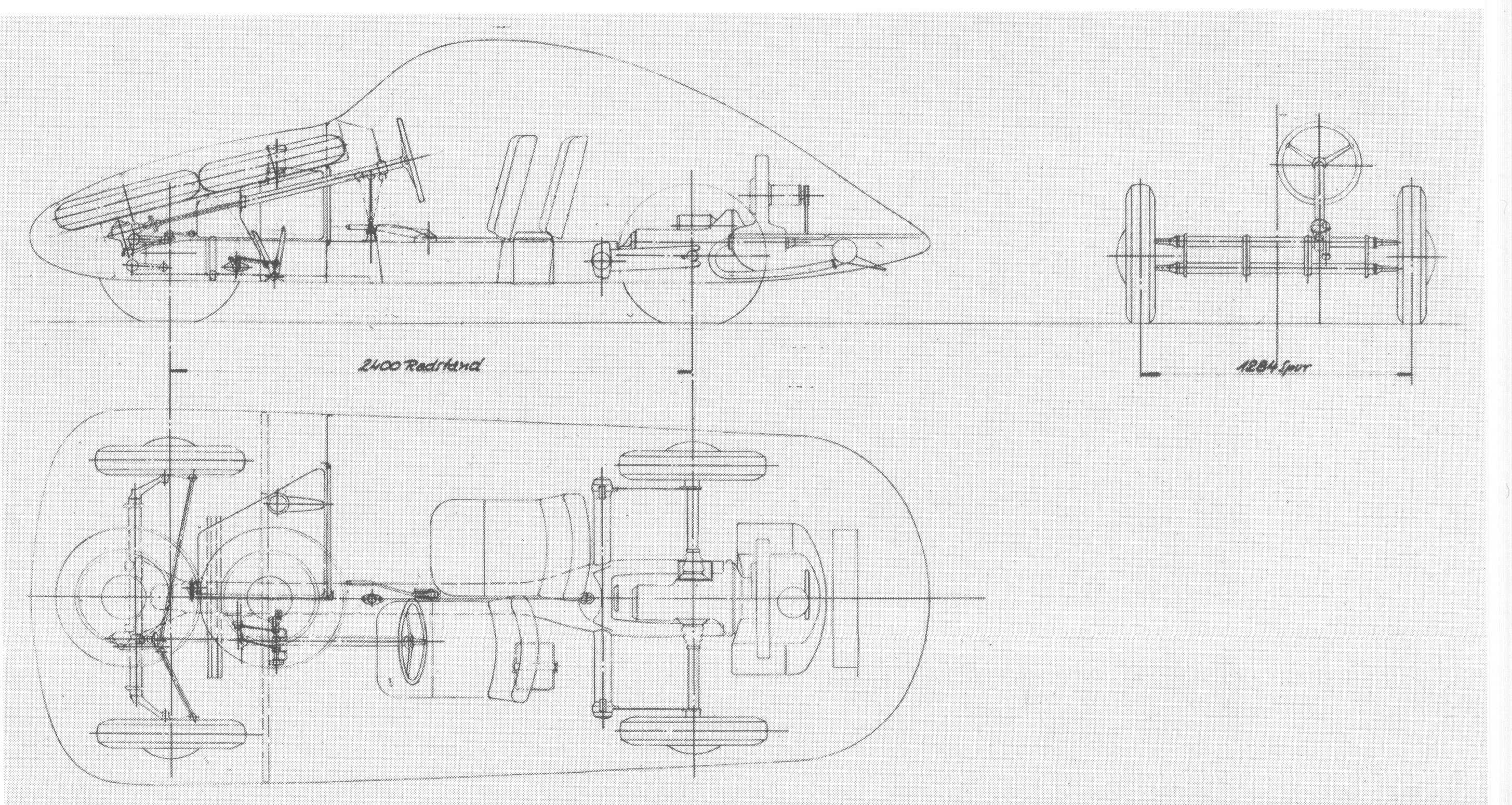
Dr. Porsche had designed the Volkswagen Type 1 with a platform type chassis to easily permit the use of different body styles. The Volkswagen under-body was treated to much attention with the intention being to improve its strength and handling. This involved replacing the chassis with a design based on aircraft construction methods.
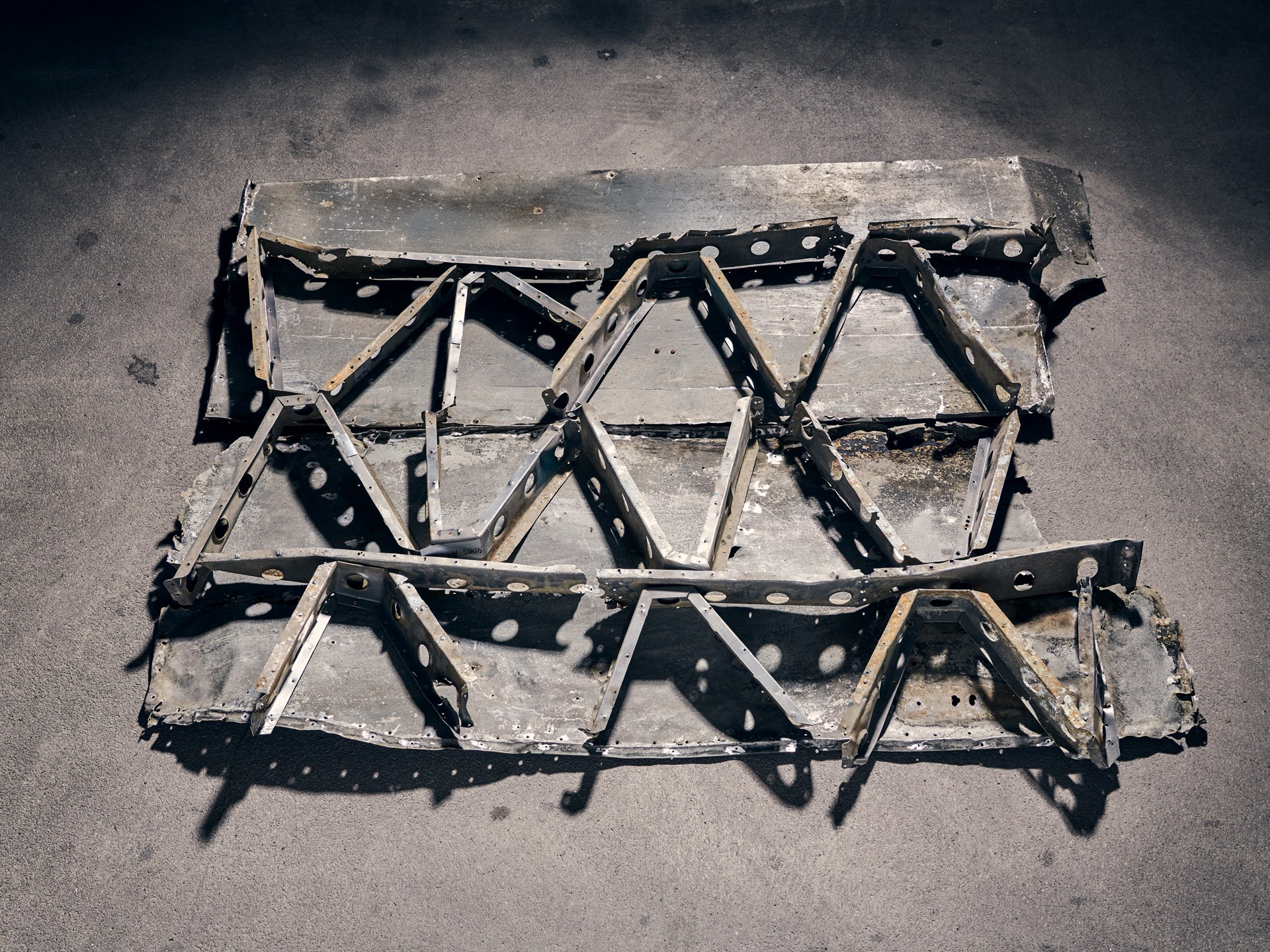
The engine was similarly worked on to bring the power up to around 32bhp. Three cars were made by Reutter, fitted with hand beaten aerodynamic aluminum alloy bodywork using only 0.5mm thick alloy panels to keep weight down to the bare minimum. The body design was by Erwin Komenda and had resulted from wind tunnel tests done in the development of the Type 114 competition cars. The end result was a car that could make 160km/hr (i.e. about 100mph).
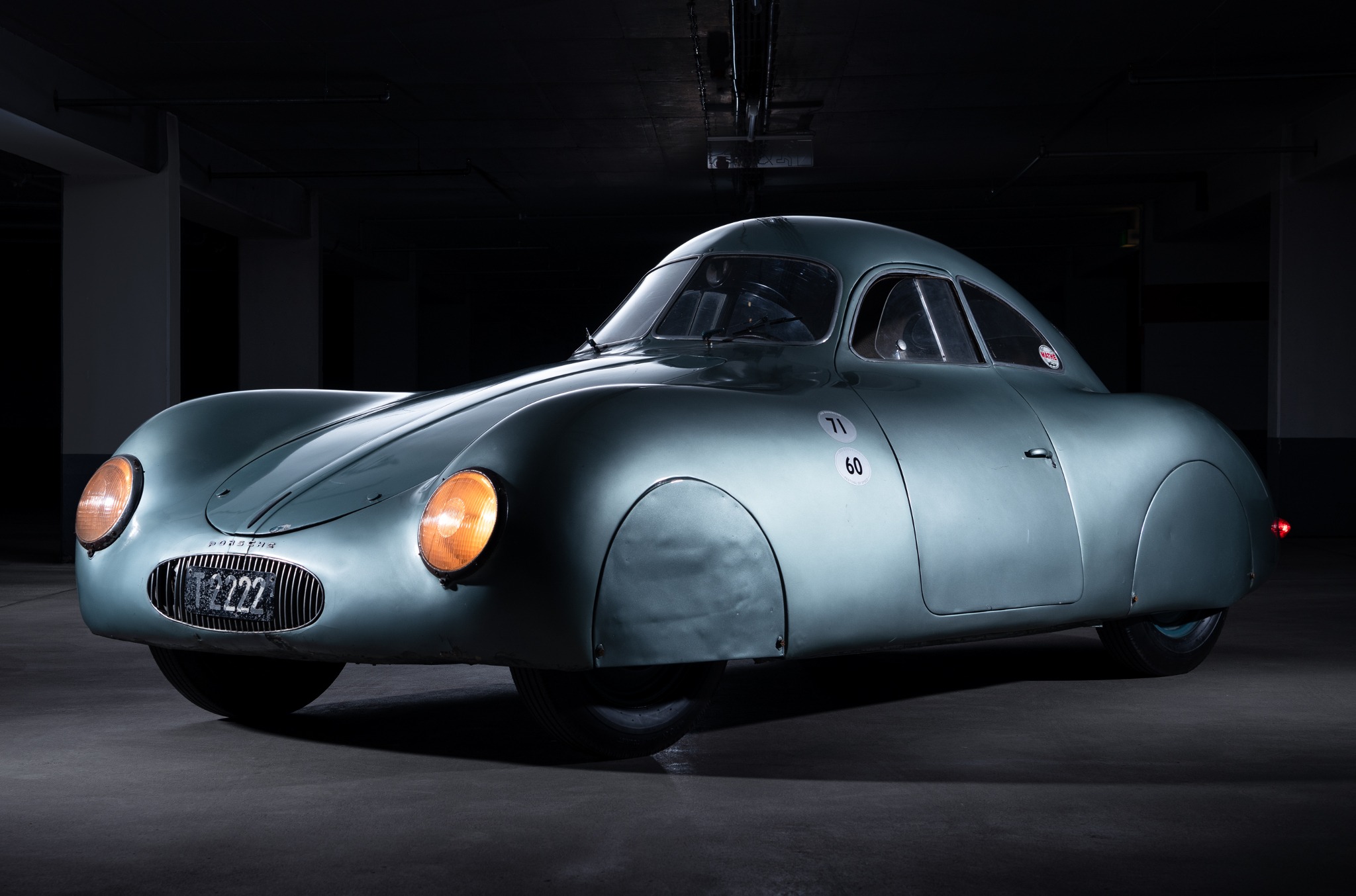
The Volkswagen Type 1 was given the designation Type 60 internally at Porsche. The three Berlin-Rome racing cars therefore were designated as Type 60 and fitted with the new body style which was Type K10 (the “K” standing for “Karosserie”, which translates as “body”). The build year for the Volkswagens used as the base cars was 1938: so the model designation was 60 K10 38 with the car’s number following on from that. The three cars built were 60 K10 38/41, 60 K10 38/42, and 60 K10 38/43. As they were hand built each one had subtle differences to the others.
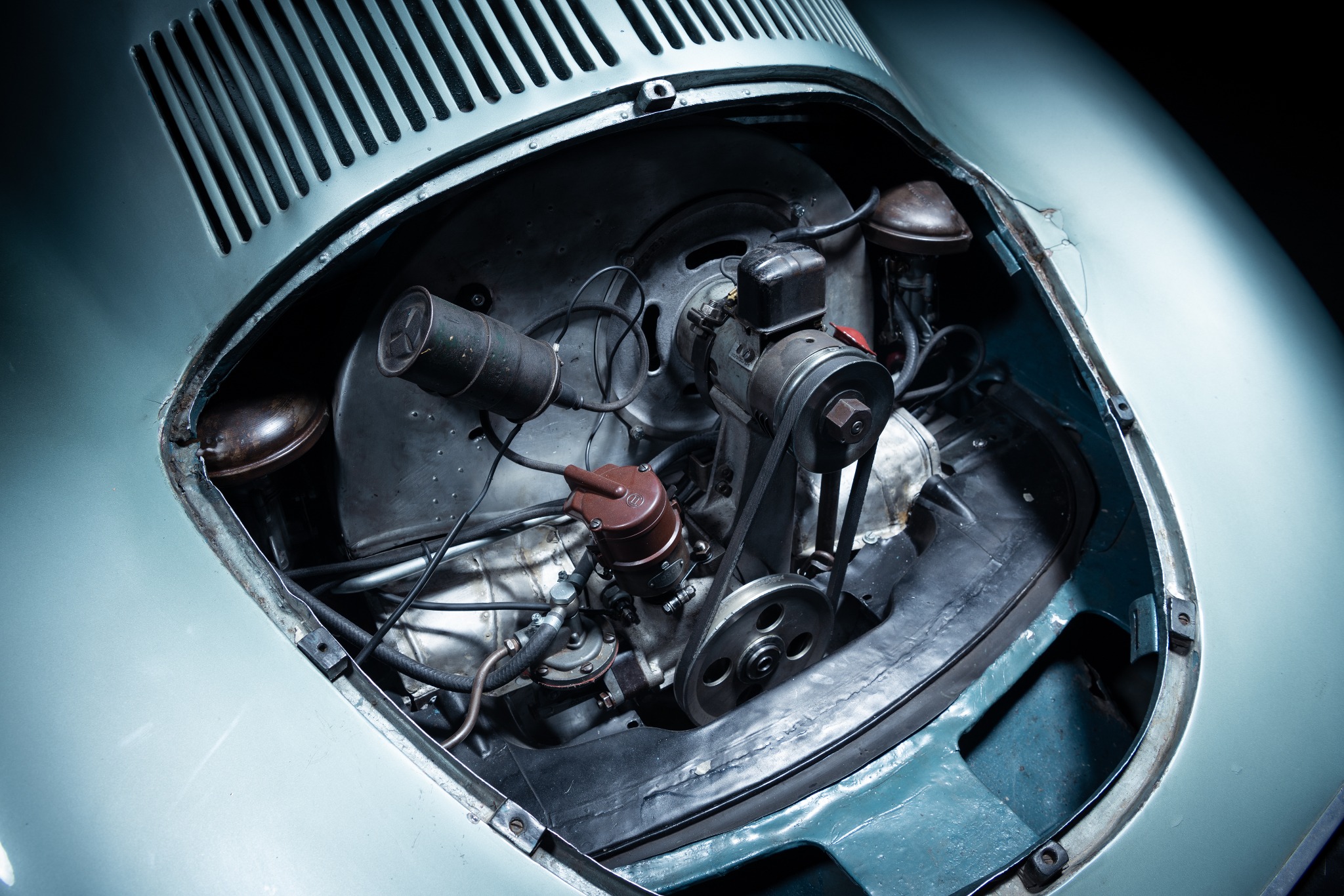
The first car built was 60 K10 38/41 and it was completed on August 19, 1939 ready for the Berlin-Rome race. However Nazi Germany launched a surprise invasion of Poland on September 1, 1939 and so the motor race had to be cancelled. War with Germany had only been delayed by the Munich Conference of 1938, not averted, Britain and France declared war on Germany two days later and the Second World War began.
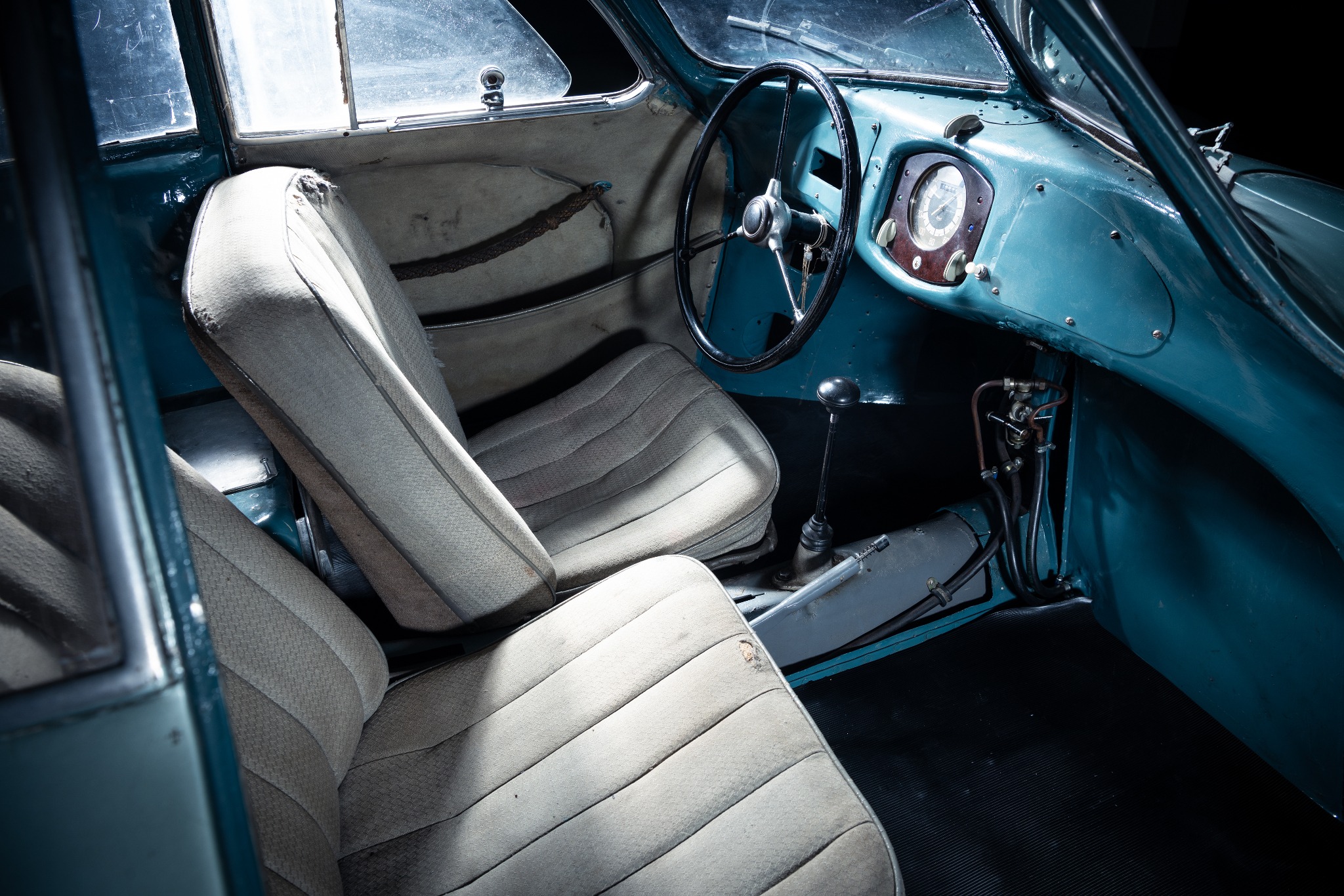
The British and French declaration of war against Germany did not result in large scale determined fighting breaking out but, by contrast, the period from September 3, 1939 until May 9, 1940 was relatively peaceful and came to be known as the “Phoney War”, although at the time the British press referred to it as the “sitzkrieg” as opposed to the German invasion of Poland which had been called the “Blitzkrieg”.
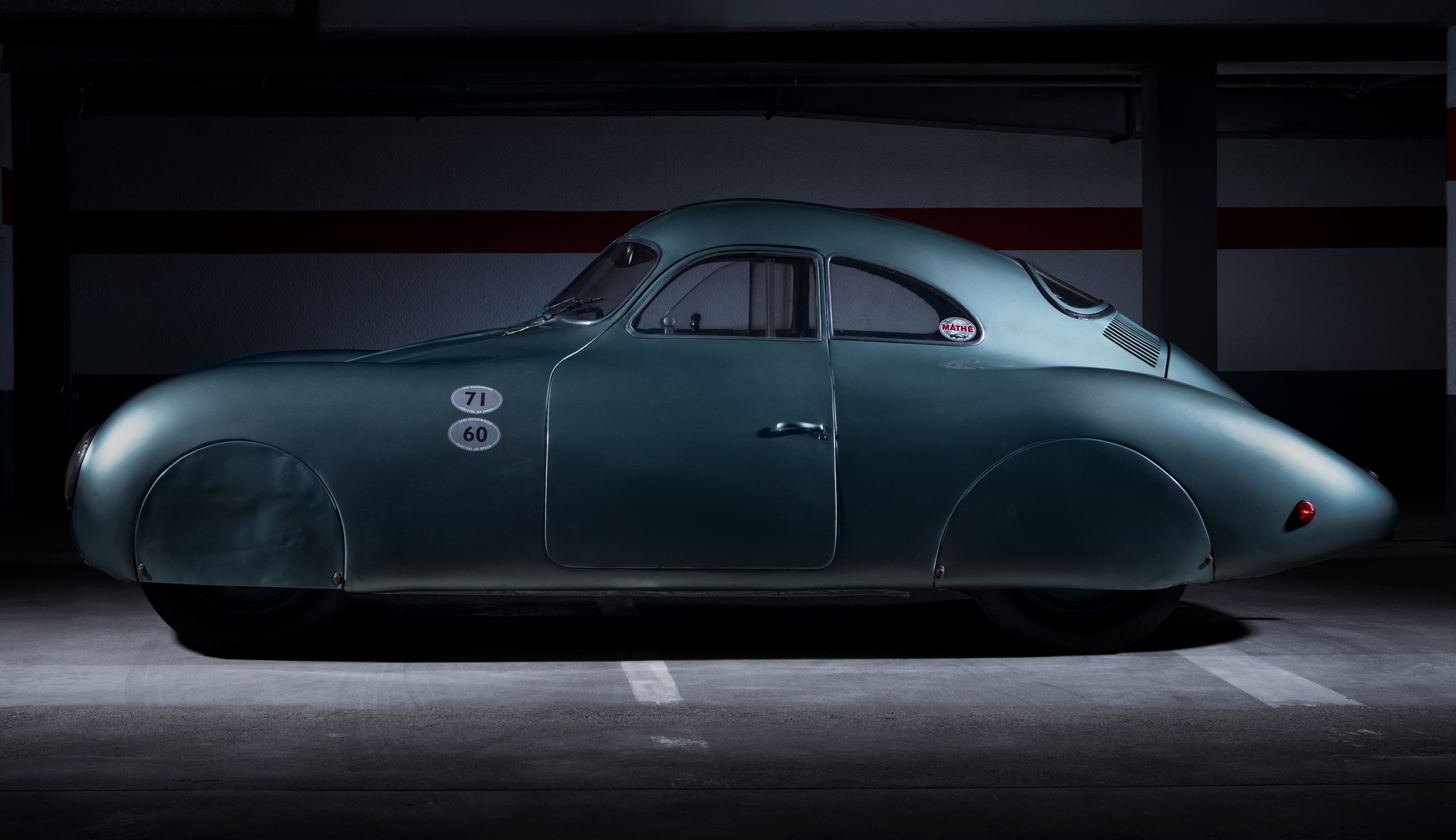
During this time the second Type 64 car, 60 K10 38/42, was completed by the end of 1939 and the third car, 60 K10 38/43 was finished around the time of the end of the “Phoney War” in the summer of 1940. Plans for the Berlin-Rome race were deferred until 1940, in which year Imperial Japan joined the German/Italian Axis which resulted in tentative plans being made for a Berlin-Rome-Tokyo race in 1941. December 1941 saw the Japanese attack on Pearl Harbor however instead of a road race, and the United States entered the war. Nobody planned a 1942 road race because by that stage large scale fighting was well and truly underway and any thoughts of a road race would have been ridiculous.

The Three Porsche Type 64’s Reduced to One and Some Salvaged Bits
That an organized road race would have been ridiculous did not stop people being tempted to take one of the little Type 64 racing cars out for some enthusiastic driving however. The person believed to have crashed the first car was SS Lieutenant Colonel Bodo Lafferentz in late 1939: The SS Lieutenant Colonel was apparently a board member of Volkswagen and the car was damaged beyond repair: the wreck may have been scrapped for parts.
The second car, 60 K10 38/42, was a little different to the first one having a wider front grille and it also had curved window glass whereas the first car featured flat glass. This car was also fitted with an antenna although it is not known what type of radio equipment was fitted. This car survived undamaged until 1941 when it was involved in a crash that caused damage to the front left fender and left side door.
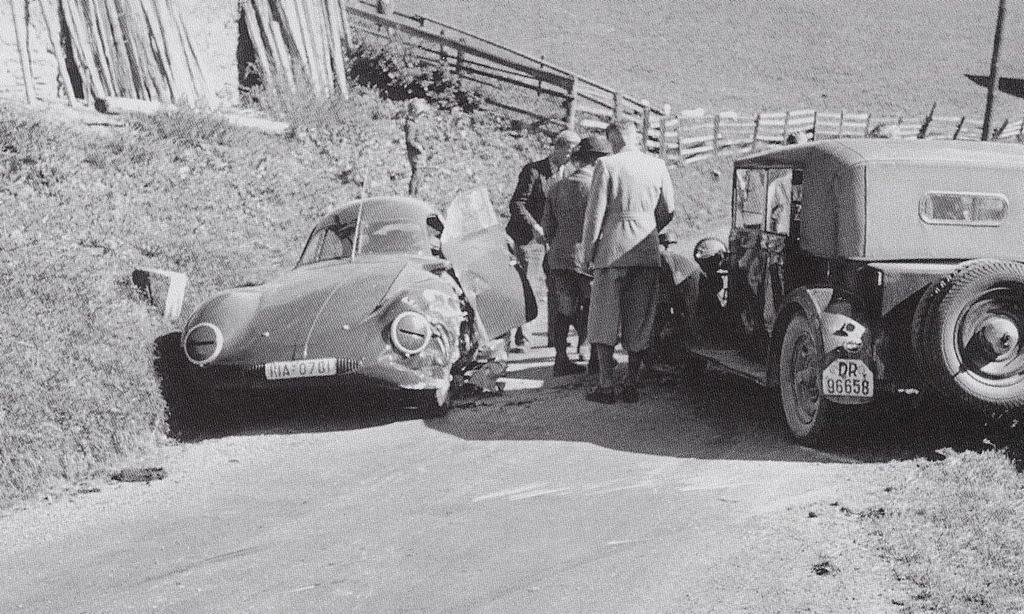
The damage was repaired and the car was kept by the Porsche family and was taken with them to Gmünd, Carinthia in Austria in 1944. This car remained with the family in storage until it was discovered by some American GI’s in 1945 who found it to be an enormously fun machine. The Americans cut the roof off to make the car into an American style convertible – sort of – and proceeded to drive it to destruction. The remains of this car were later sold to Swiss motor racing enthusiast Otto Mathé when he also purchased the third Type 64 car from the Porsche family.
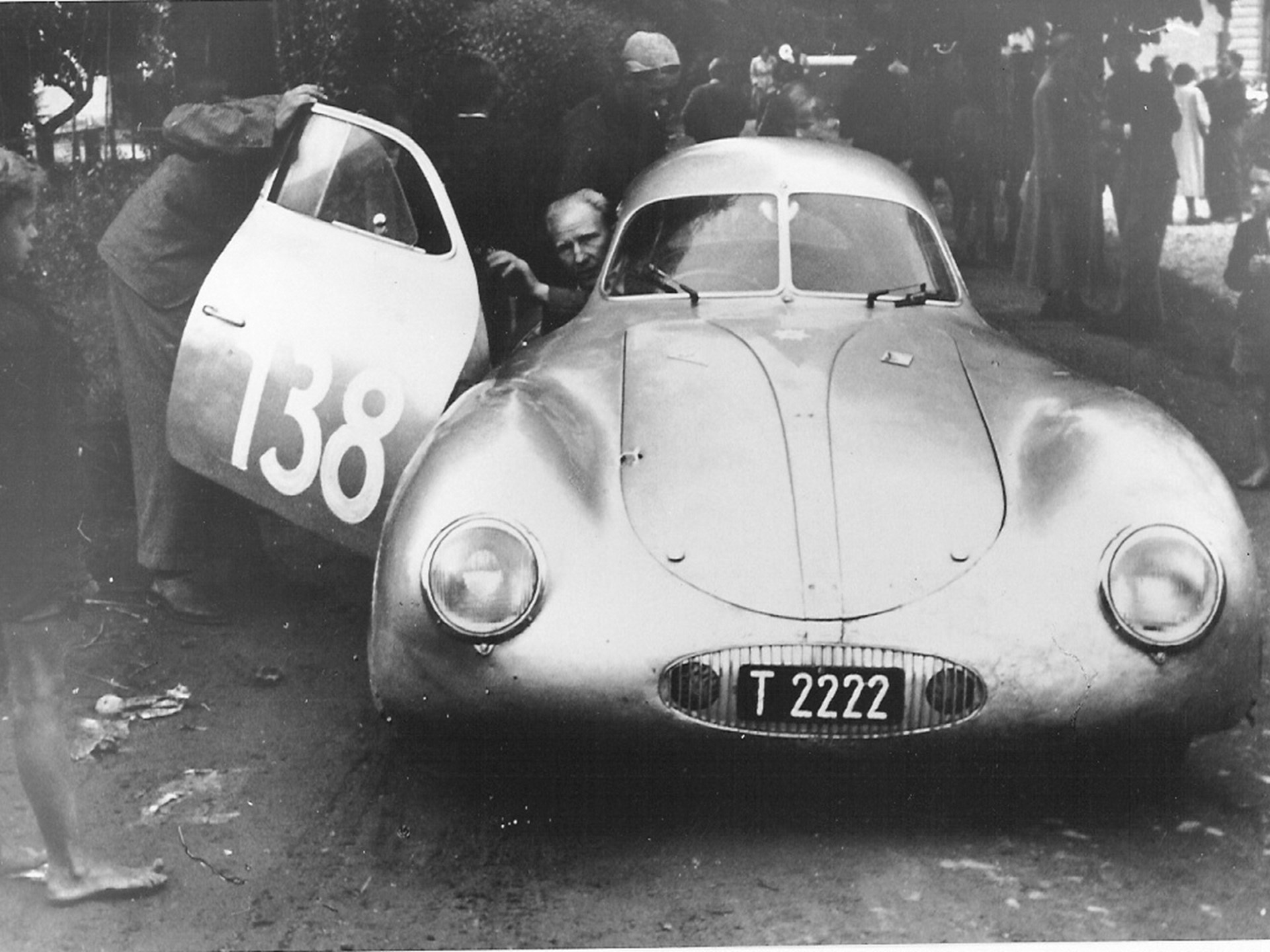
The third car 60 K10 38/43 was used by the Porsche family and so it also was taken with them to Gmünd when they moved there in 1944. Dr Porsche’s son Ferry used this car and had it refurbished, probably by Pininfarina in 1947. The refurbishment included a new silver paint scheme, new front grille, and the fitting of a pair of windscreen wipers located at the bottom of the front windows. In Austria this car’s registration number was K 45-240, the “K” standing for Kärnten, which is the German we translate into English as Carinthia. Ferry Porsche personally affixed the letters “PORSCHE” to the front of the car, making it the first to wear the Porsche name.
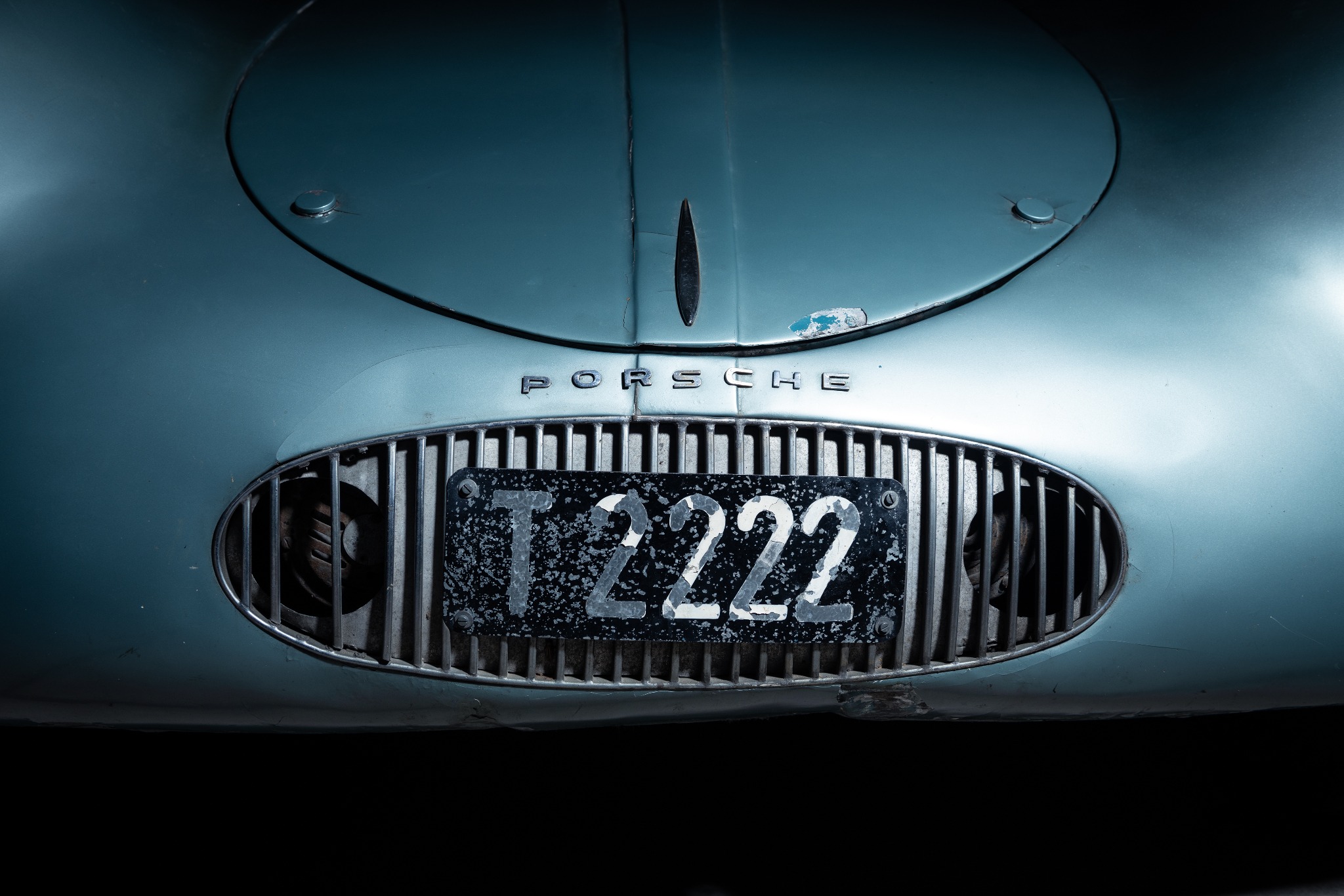
After the war Dr. Ferdinand Porsche was arrested and imprisoned by the French in Dijon and forced to work on the design of a car for French car maker Renault, the Renault 4CV. He was kept in quite unhealthy conditions and his physical condition deteriorated causing the family great concern. The Porsche family negotiated with the French authorities and arrived at a financial settlement to obtain the release of Dr. Porsche on August 5, 1947. The finance for this was raised by Ferry Porsche creating a racing car called the “Type 360 Cisitalia” for Italian racing driver and soccer player Piero Dusio.
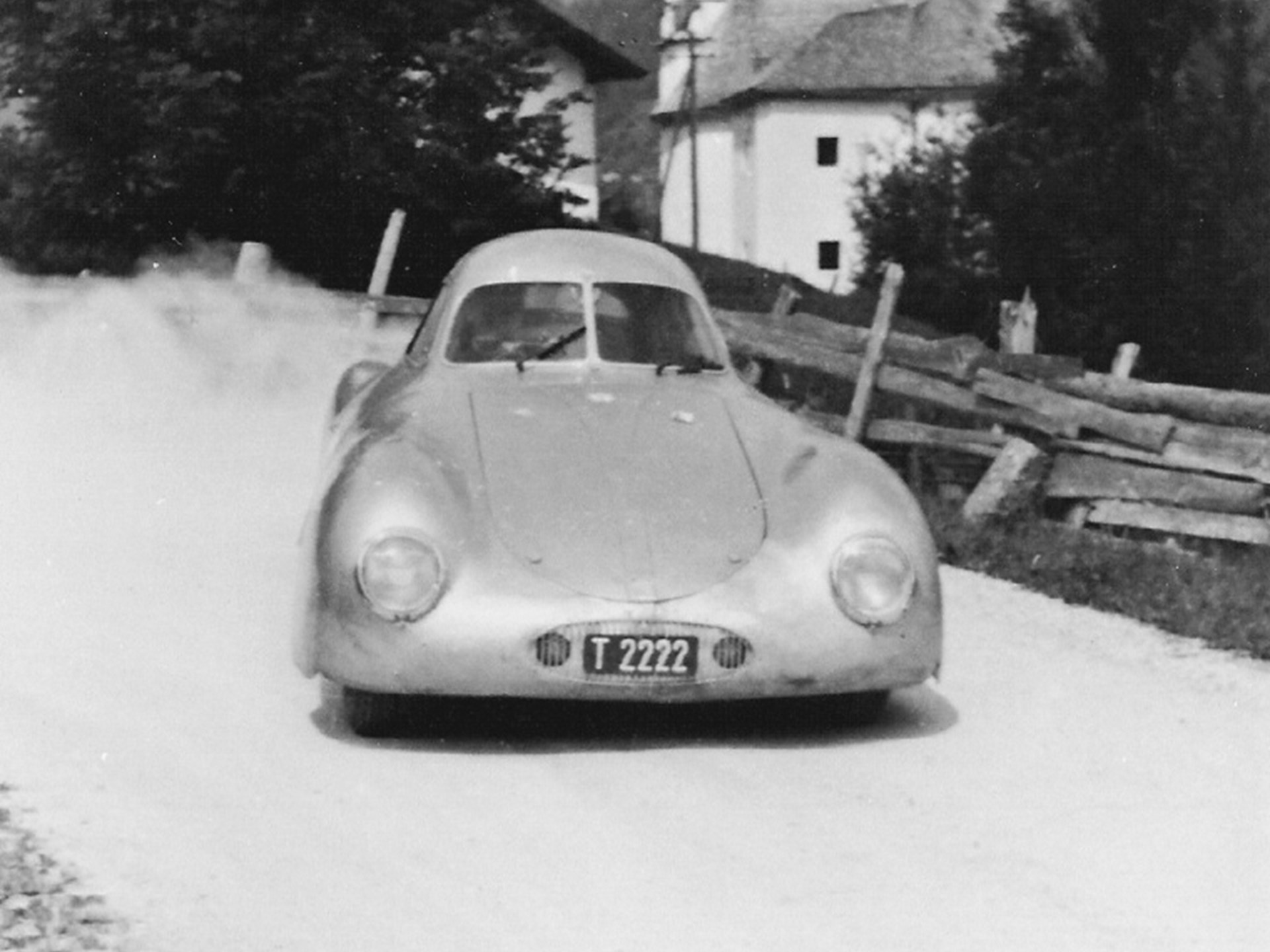
With Dr. Porsche released the family’s troubles were by no means over. Their business equipment was under an Allied embargo so they could not raise the finance needed to resume business. To raise money Ferry Porsche and those with him created the Porsche 356 and began to hand build cars at their workshop in Gmünd. They made 49 cars by obtaining orders from Volkswagen dealers and pre-payment for each car. These cars were entirely hand made and featured aluminum bodywork. This was around 1948-1949 and in the process of raising money to re-start the Porsche business, and move into manufacturing cars under their own family name, the third car 60 K10 38/43, along with some parts remaining from the second car 60 K10 38/42 that had been remodeled and mostly destroyed by American servicemen, was sold to Swiss racing enthusiast Otto Mathé.
Otto Mathé Takes the Third and Only Surviving Type 64 Porsche Racing
Otto Mathé appears to have absolutely loved the Porsche Type 64, but he was a man who believed that “shoes are meant to be worn” and he determined to take his “only one in the world” Porsche Type 64 racing and rallying. He had started out in motorsport in 1923 racing motorcycles but in 1934 he had a serious accident which left his right hand paralyzed. Mathé was not a man who would let a small thing like a paralyzed hand stop him from living life to the full however, and living life to the full meant going motor racing.
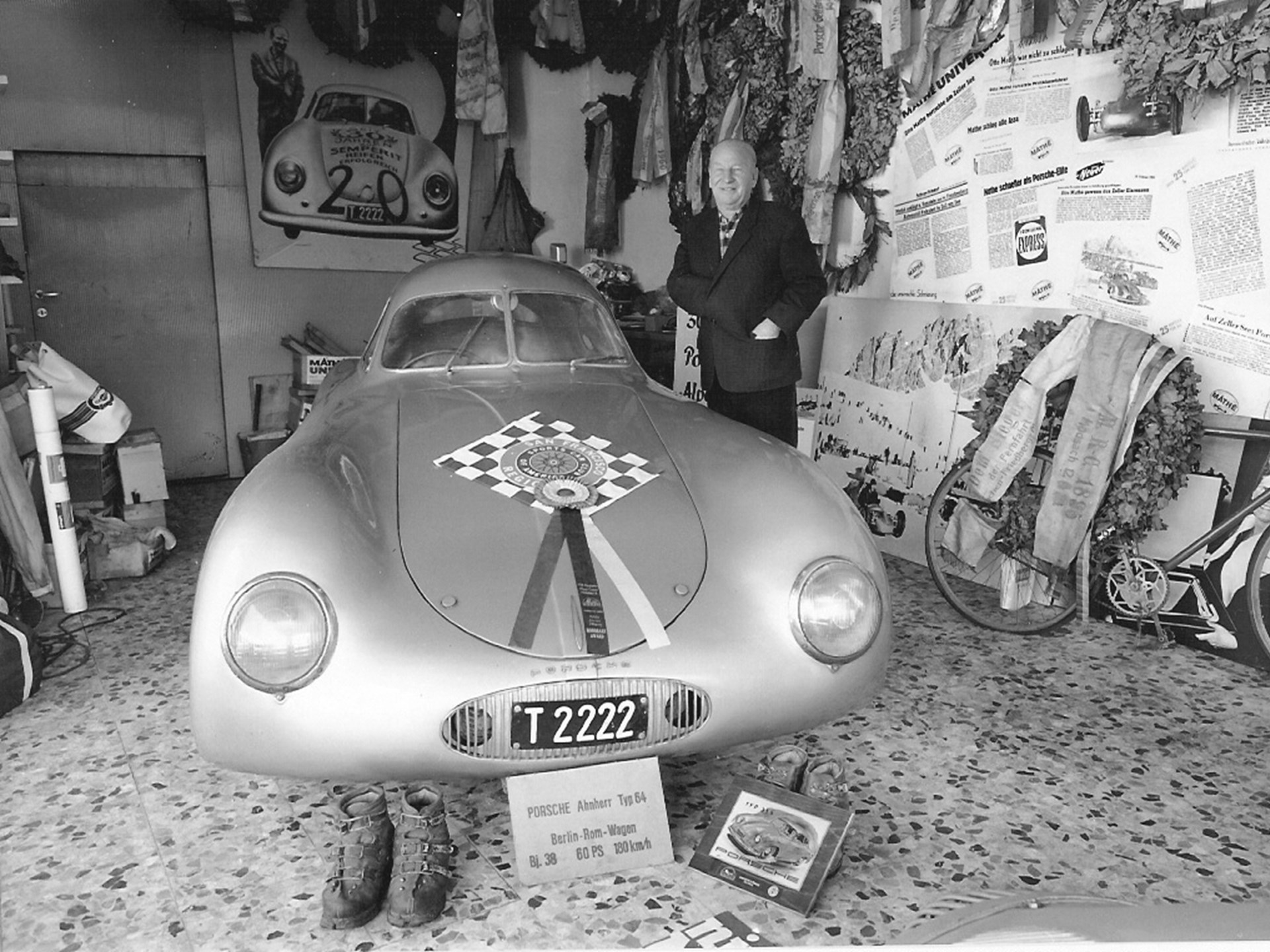
Mathé had the Type 64 converted from left to right hand drive so he could operate the gear lever with his left hand. He also sometimes removed the right side windscreen so he could see the road better: legend has it that his method for windscreen removal involved kicking the glass out.
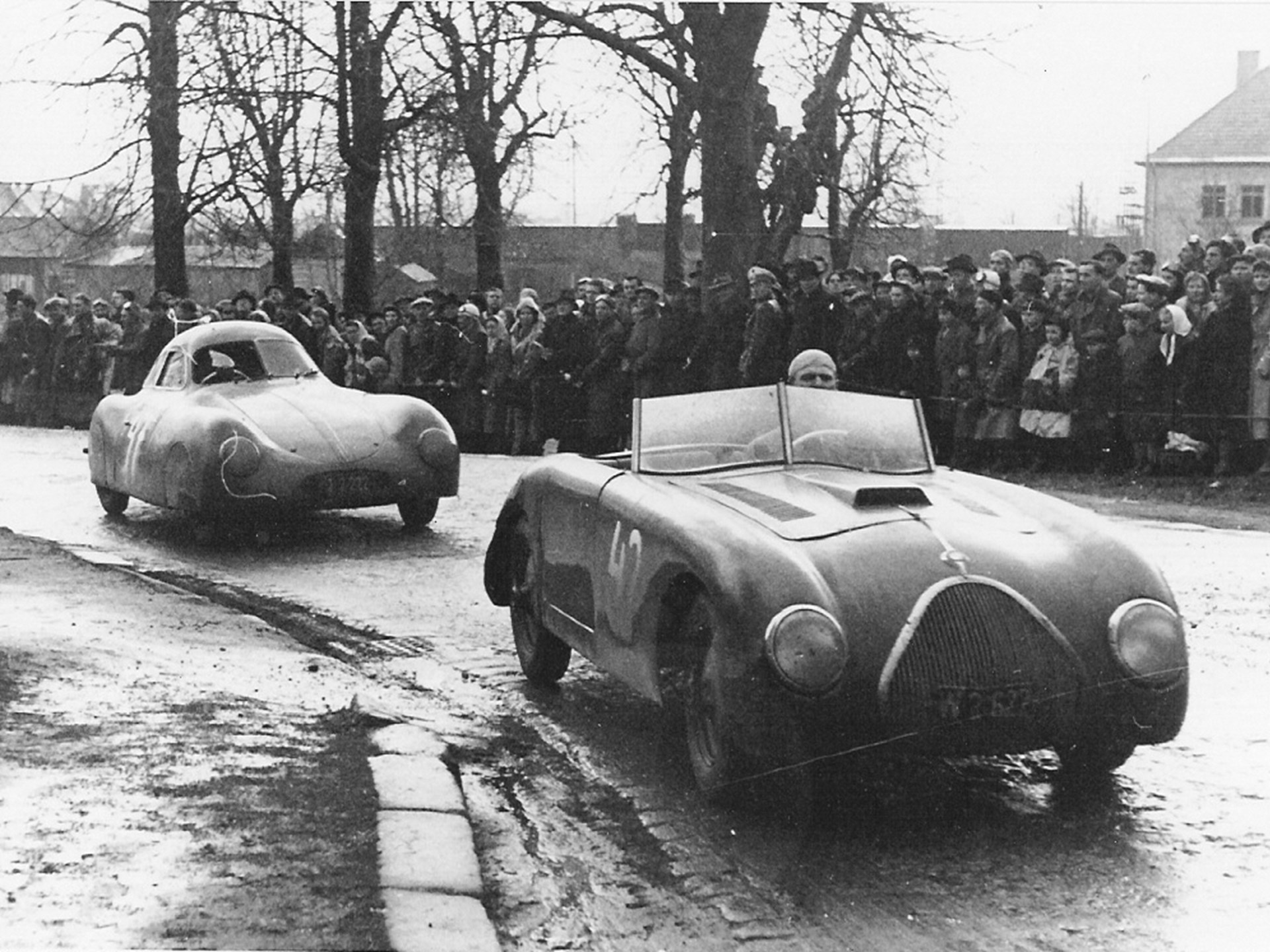
Otto Mathé had some improvements done to the Type 64 that were a little more technically sophisticated, such as converting the brakes from cable actuated to hydraulic.
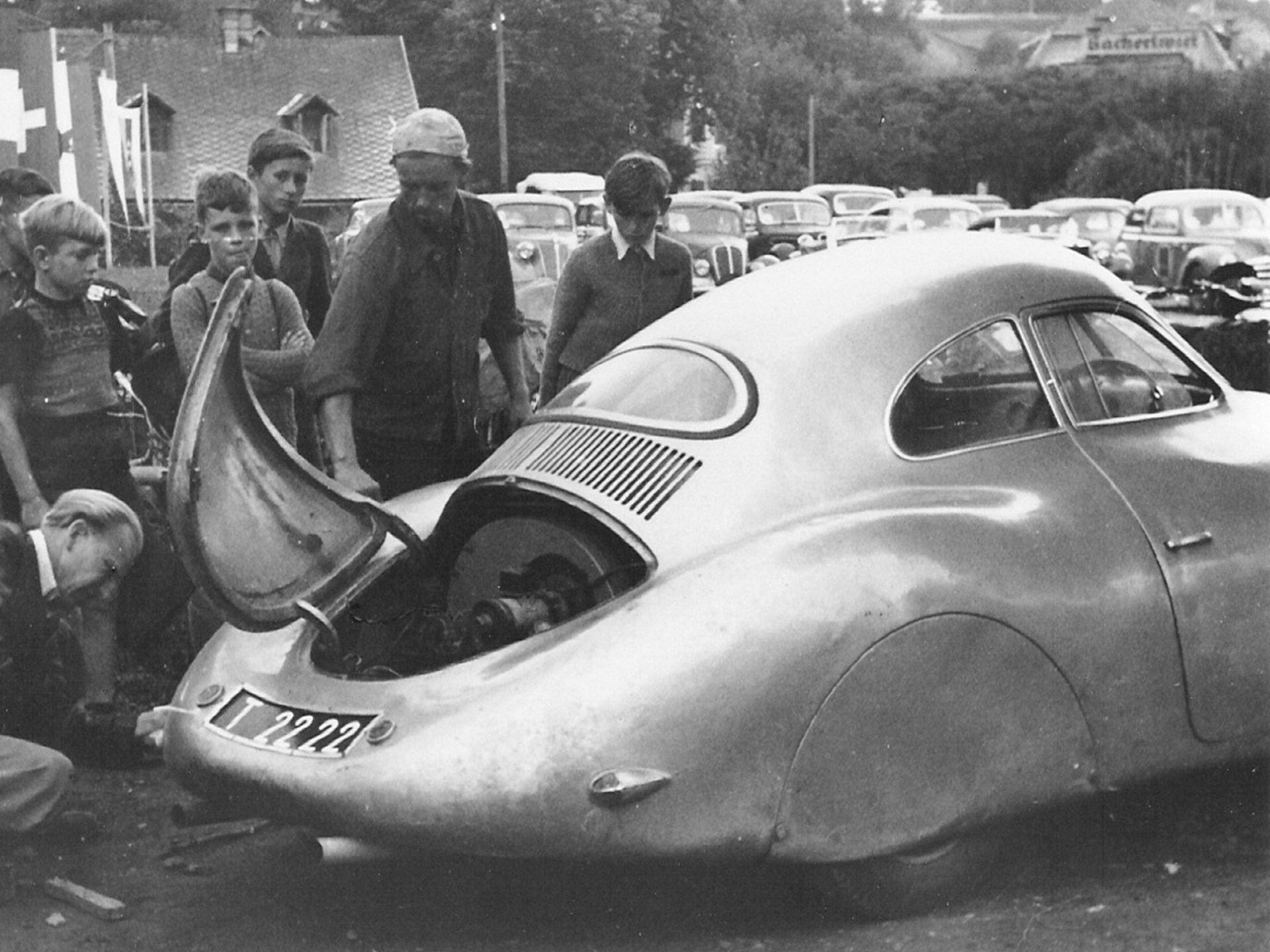
Otto Mathé kept the Porsche Type 64 up until his death in 1995 at the age of 88 years. Unfortunately it is not possible for us to take anything with us when we “shuffle off this mortal coil and go to join the choir invisible”: but whether or not there is a motor racing track in heaven then we might just encounter Otto Mathé, with his right hand healed, enjoying an amazing eternity.
Porsche Type 64 60 K10 38/43 in the Twenty First Century
After Otto Mathé’s passing the Type 64 was sold to a doctor named Thomas Gruber in 1998. Thomas Gruber had the car restored back to left hand drive by Austrian company Barbach, but otherwise kept it much as Otto Mathé had maintained it. Dr. Gruber used the car in various sporting events including at Goodwood in Britain. Dr. Gruber is the co-author of the book “Carrera RS” with Georg Konradsheim.
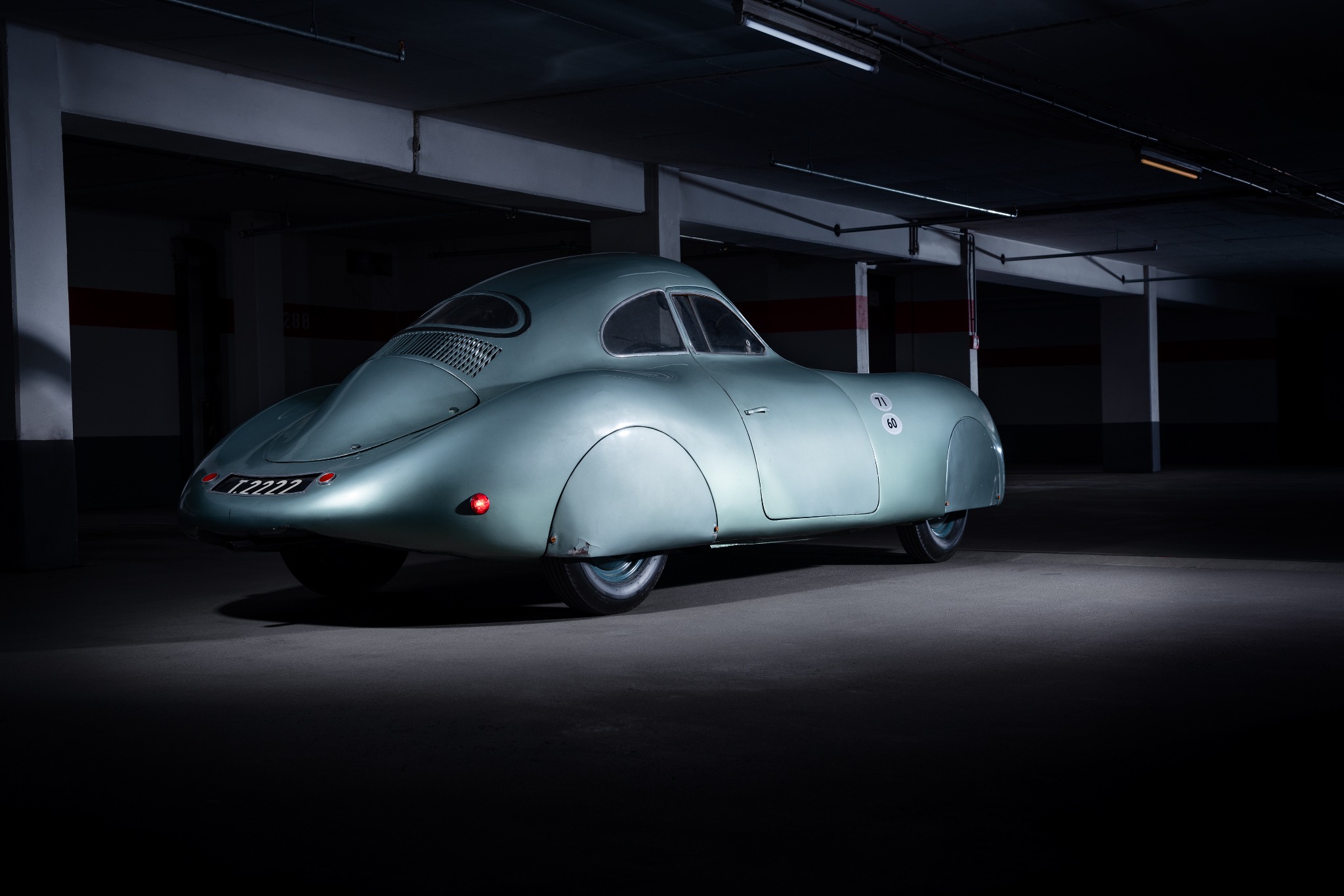
Ten years later 60 K10 38/43 changed hands again coming into the ownership of the Schörghuber company.
This car, filled with history, and a car that was personally driven both by Dr. Ferdinand Porsche and his son Ferry is about to be sold again. Porsche Type 64 #60 K10 38/43 is to be presented at auction by RM Sotheby’s at their Monterey sale to be held over August 15-17, 2019.
Given its historical significance, and its uniqueness, this car is expected to attract a substantial price and as a consequence Internet bidding is not permitted for this car and advanced registration is required.
You will find the sale page for this car that was the pride and joy of Dr. Porsche, Ferry Porsche, and Otto Mathé if you click here.
This Type 64 represents the link between Dr. Porsche’s Volkswagen, and his son Ferry Porsche’s 356: it is the root from which the Porsche company grew, and it is the first car to be fielded in motorsport under the Porsche name.
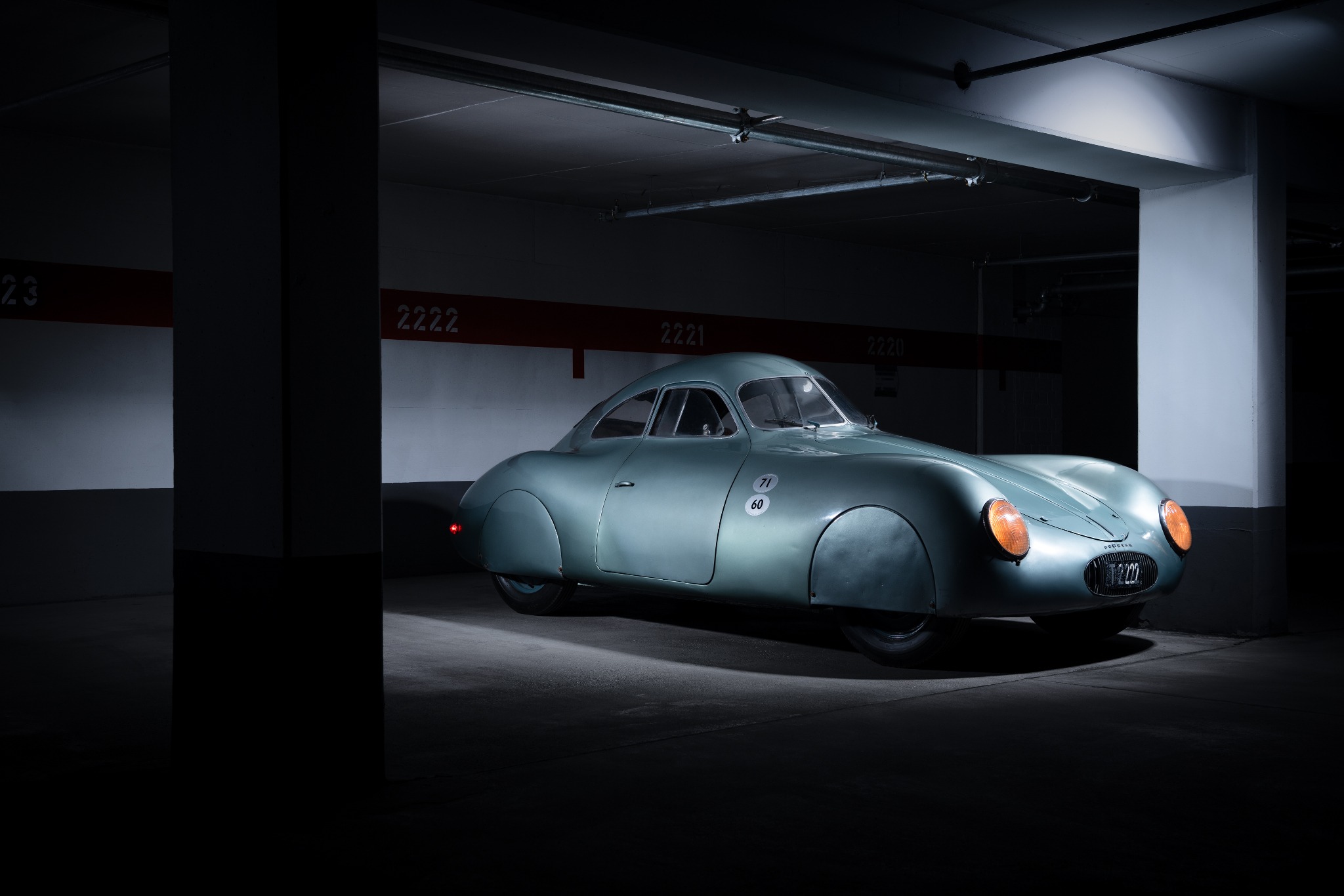

Jon Branch is the founder and senior editor of Revivaler and has written a significant number of articles for various publications including official Buying Guides for eBay, classic car articles for Hagerty, magazine articles for both the Australian Shooters Journal and the Australian Shooter, and he’s a long time contributor to Silodrome.
Jon has done radio, television, magazine and newspaper interviews on various issues, and has traveled extensively, having lived in Britain, Australia, China and Hong Kong. His travels have taken him to Indonesia, Israel, Italy, Japan and a number of other countries. He has studied the Japanese sword arts and has a long history of involvement in the shooting sports, which has included authoring submissions to government on various firearms related issues and assisting in the design and establishment of shooting ranges.

